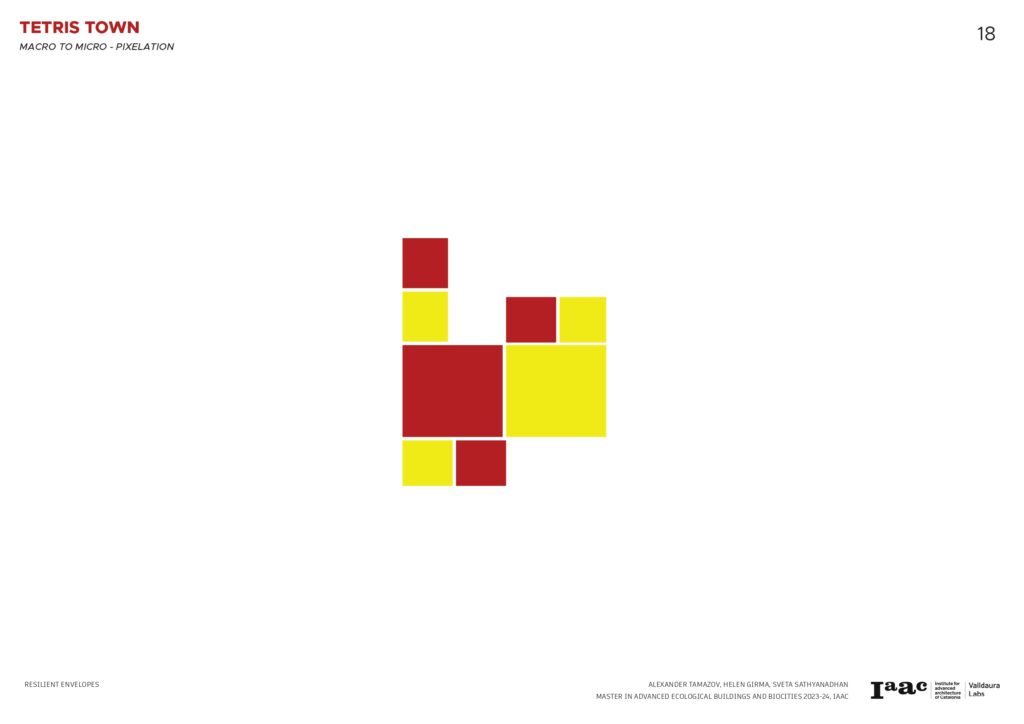To solidify both the thermodynamics principles and the overall image of the Urban Synthesis project we took part in yet another workshop: Resilient Envelopes. Experimenting with new and controversial ecological materials by making 3D and physical models alike helped us develop uniform façade guidelines that continue the idea of pixelation.
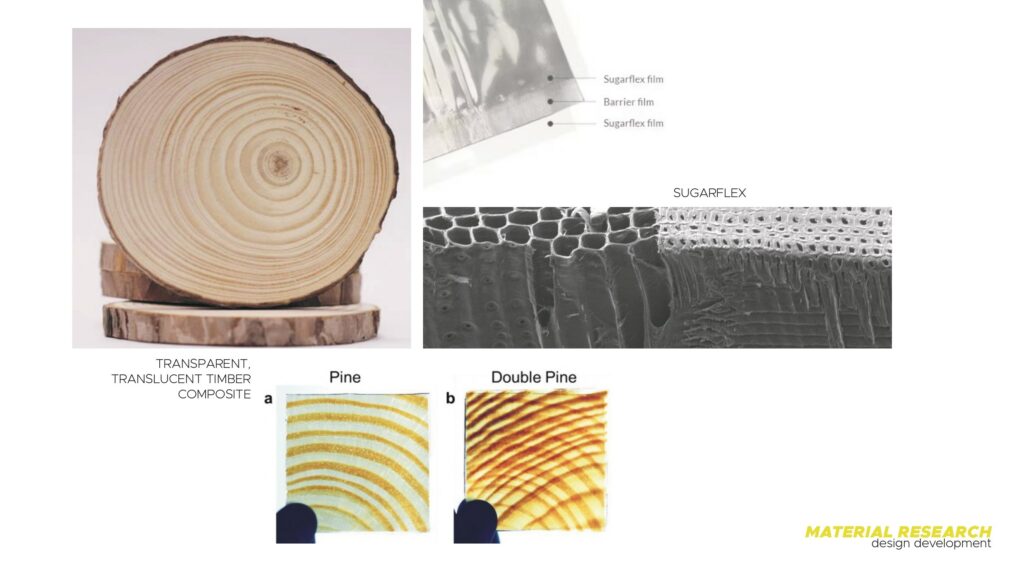
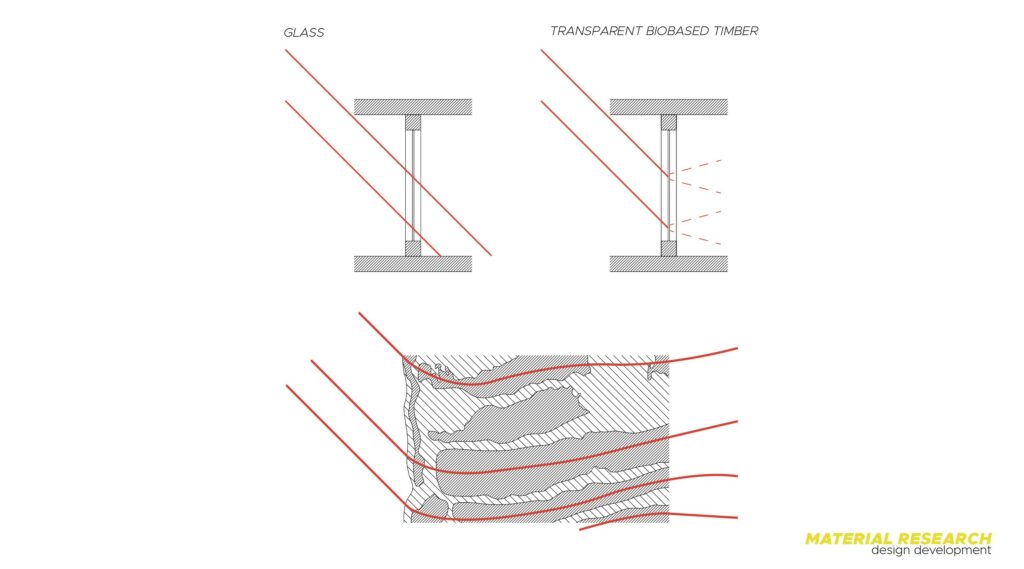
To better understand the impact of sunlight on our building we ran a number of tests using the Grasshopper Ladybug plugin. By carefully studying each surface of the façades, we were able to determine the optimal position for each shading element.
After many iterations we homed in on the optimal design of the shading structure for the residential part of our building. It consists of 4 vertically oriented rotating panels that are themselves divided into grids. The grids are filled in places with square-shaped sheets of transparent wood material. The positioning of the transparent pieces was driven by our analysis of the environmental impact.



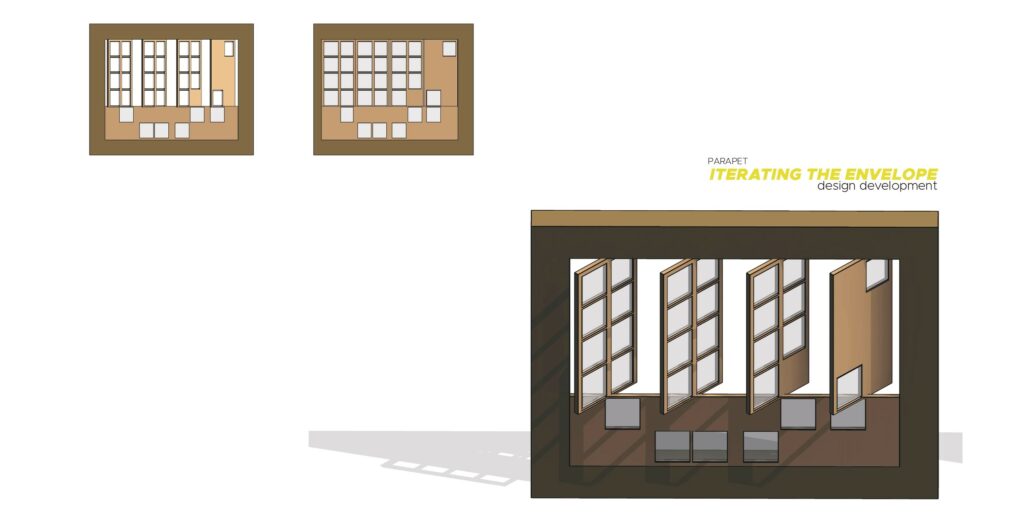



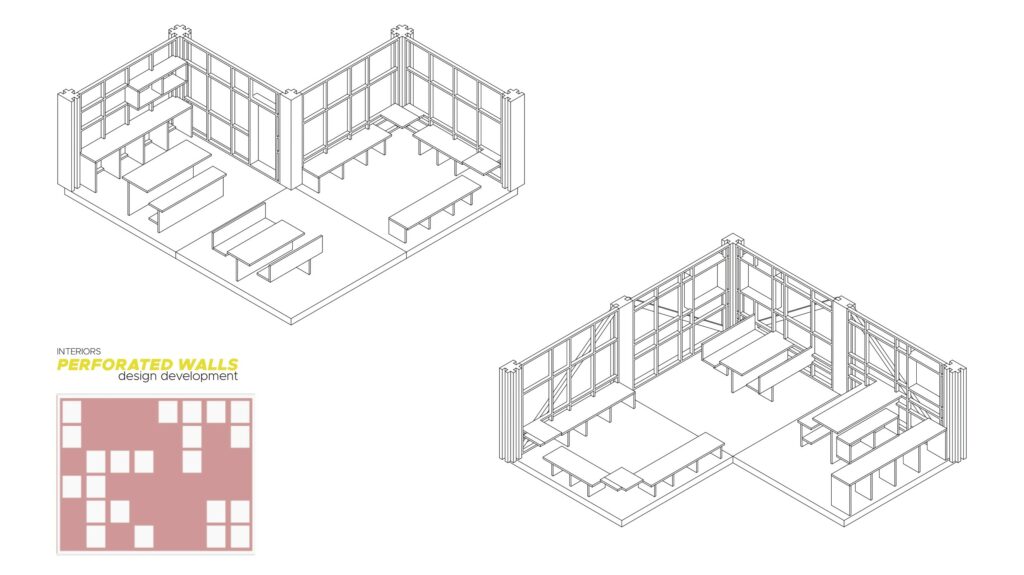
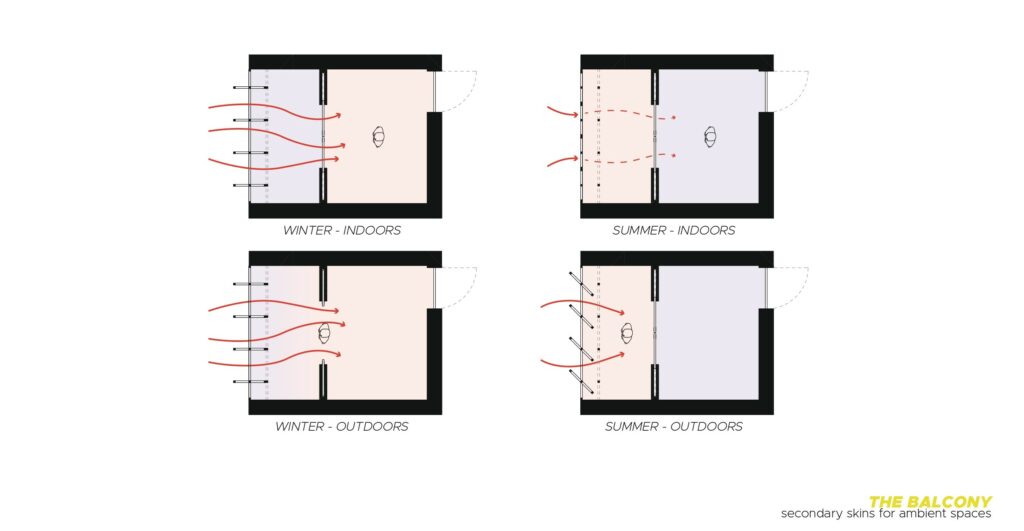
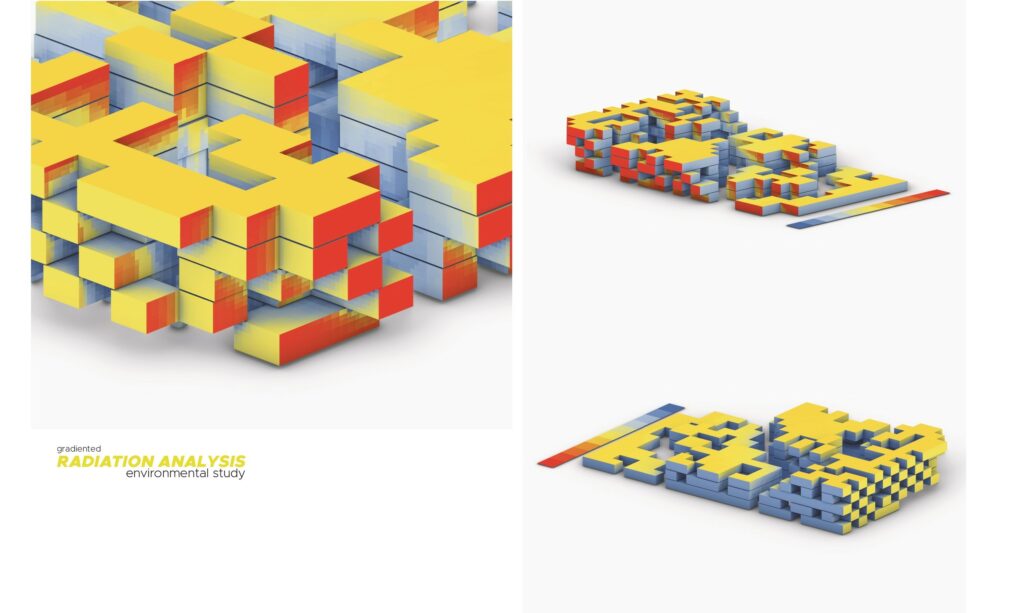
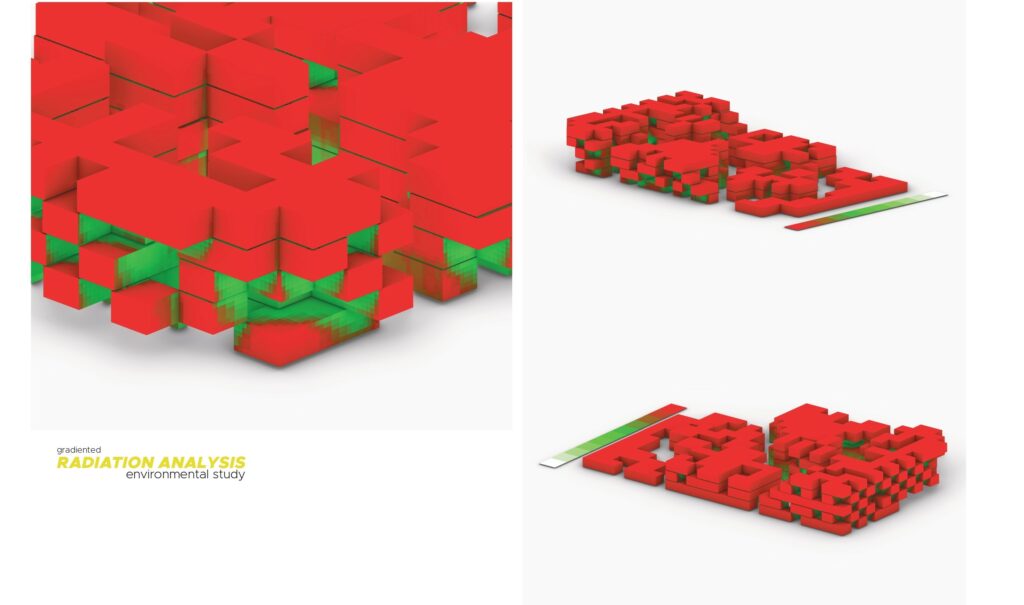
Locally sourced transparent wood is sustainably produced with the use of bio-based chemicals and resins to help disperse the rays of light seeping through into the interior of the building. As timber is the main material that is used in the construction of both the building and the furniture, the next logical step was to maintain the uniformness of the material used on our facades.
We also tested out the sizes and the positioning of the panels in relation to railings in order to save usable space on the building’s balconies. These tests helped us determine the optimal configuration and we also came to a decision to make balconies serve as cantilevers to save the space for the building’s inhabitants and liven up the façade at the same time.
The physical model opened our eyes to some of the possible further refinements of the visual synthesis between the industrial and the residential parts of the building.While it confirmed the viability of our concept of rotating shading elements, it also revealed some visual inconsistencies between the vertically-oriented façade of the industry with the more pixilated residence.
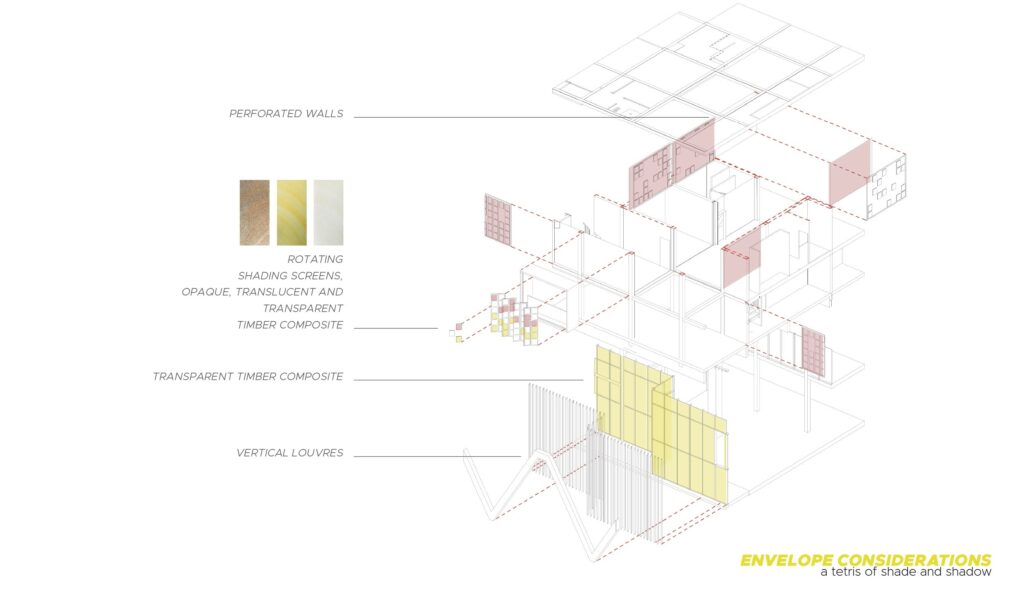
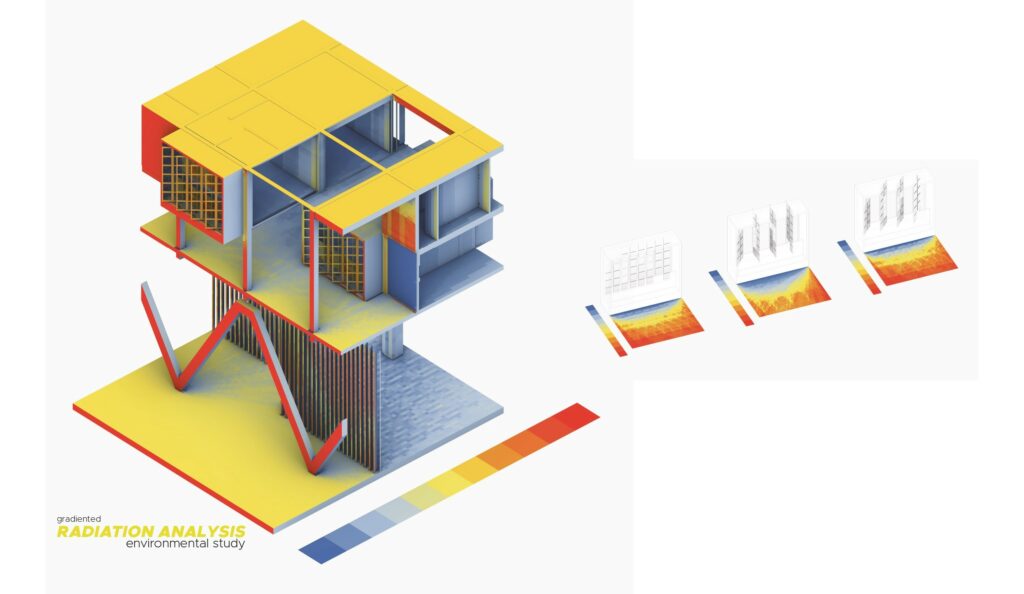
Through our research, simulations and multiple design iterations we were able to arrive at the solution we chose to go with now, helping us to further improve upon our project and master new tools and approaches to designing. After working on our resilient envelope, we came to a realization that the most fascinating part of it is the important role the façade plays in a building’s design. Not only does it solidify the overall appearance of the building, but it also plays a huge role in finalizing the thermodynamic concepts of shading and ventilation that serve as the elements around which the design of our building in particular is revolving. We hope that the experience we have thus gained will come in handy when working on our other projects in the near future.
